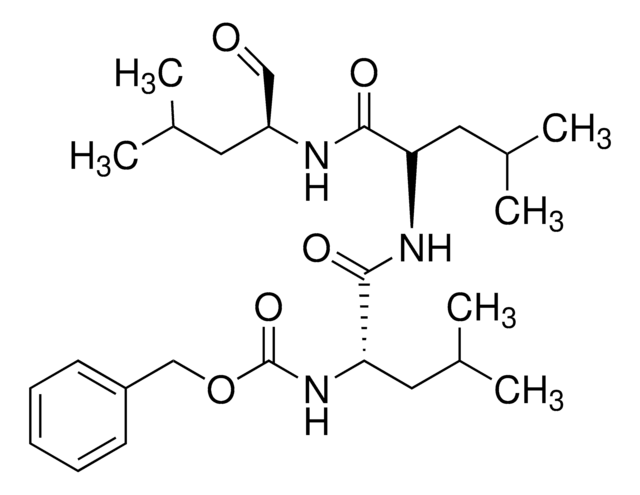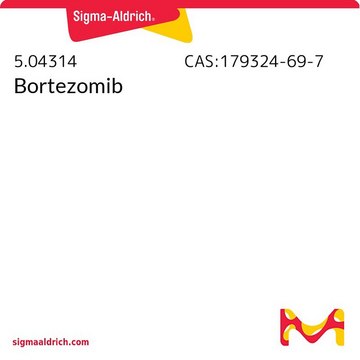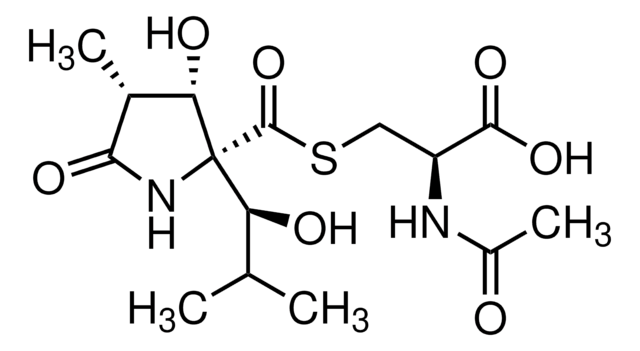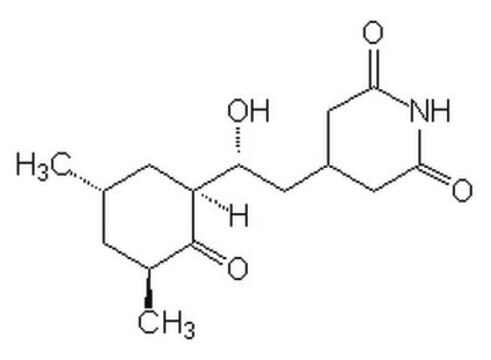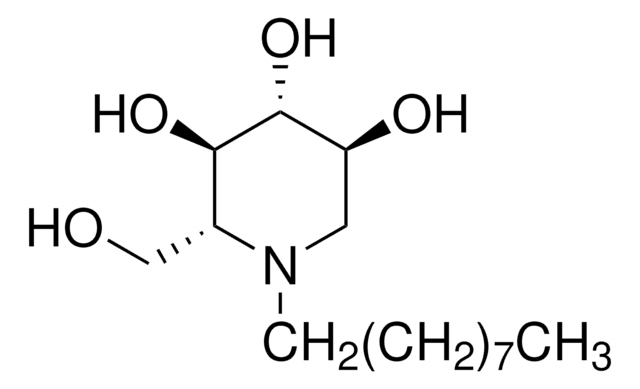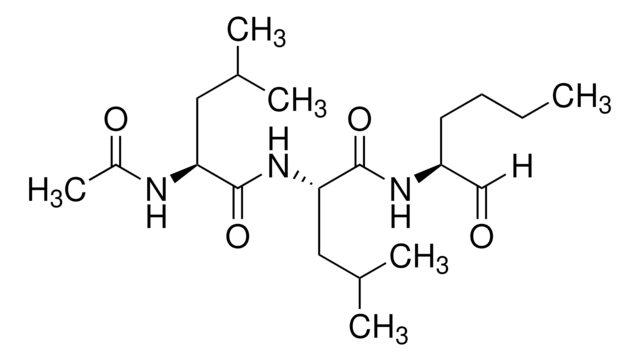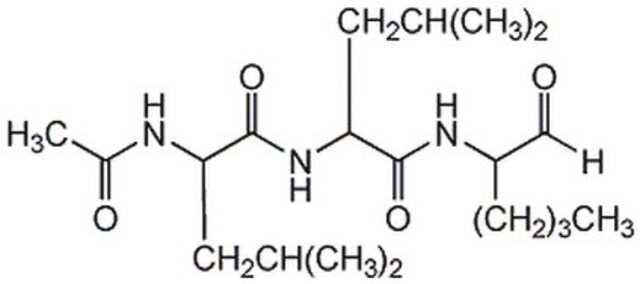Wichtige Dokumente
SML1135
MG-132(R)
≥95% (HPLC)
Synonym(e):
Z-L-Leu-D-Leu-L-Leu-al
About This Item
Empfohlene Produkte
Produktlinie
SAFC Hitech®
Qualitätsniveau
Assay
≥95% (HPLC)
Form
powder
Löslichkeit
DMSO: soluble
Lagertemp.
−20°C
SMILES String
O=C(N[C@H](CC(C)C)C(N[C@H](C=O)CC(C)C)=O)[C@H](CC(C)C)NC(OCC1=CC=CC=C1)=O
InChI
1S/C26H41N3O5/c1-17(2)12-21(15-30)27-24(31)22(13-18(3)4)28-25(32)23(14-19(5)6)29-26(33)34-16-20-10-8-7-9-11-20/h7-11,15,17-19,21-23H,12-14,16H2,1-6H3,(H,27,31)(H,28,32)(H,29,33)/t21-,22+,23-/m0/s1
InChIKey
TZYWCYJVHRLUCT-ZRBLBEILSA-N
Angaben zum Gen
human ... CTSB(1508) , NFKB1(4790) , PSMA1(5682)
Verwandte Kategorien
Biochem./physiol. Wirkung
Rechtliche Hinweise
Lagerklassenschlüssel
11 - Combustible Solids
WGK
WGK 3
Flammpunkt (°F)
Not applicable
Flammpunkt (°C)
Not applicable
Hier finden Sie alle aktuellen Versionen:
Besitzen Sie dieses Produkt bereits?
In der Dokumentenbibliothek finden Sie die Dokumentation zu den Produkten, die Sie kürzlich erworben haben.
Kunden haben sich ebenfalls angesehen
Unser Team von Wissenschaftlern verfügt über Erfahrung in allen Forschungsbereichen einschließlich Life Science, Materialwissenschaften, chemischer Synthese, Chromatographie, Analytik und vielen mehr..
Setzen Sie sich mit dem technischen Dienst in Verbindung.

